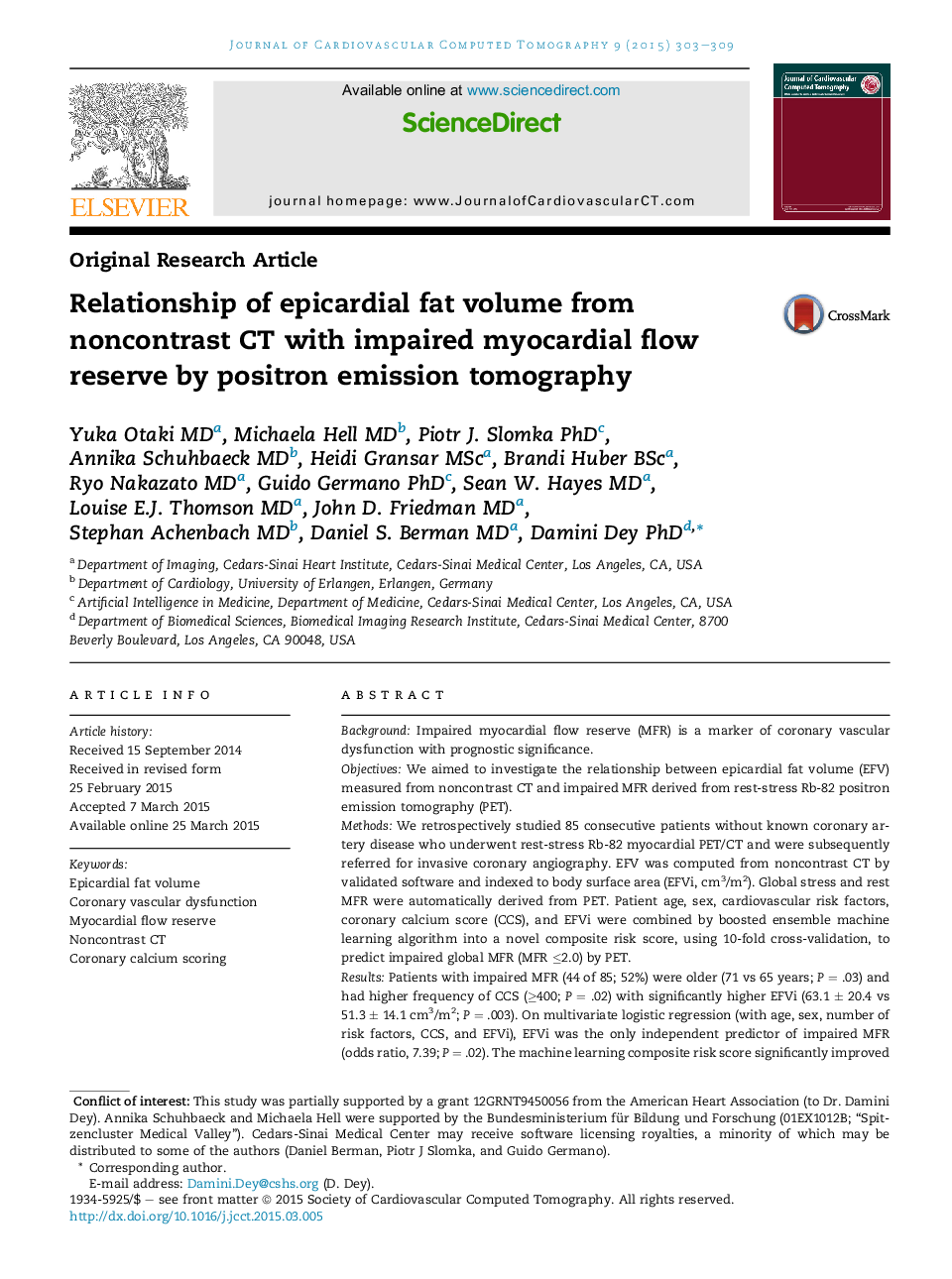| کد مقاله | کد نشریه | سال انتشار | مقاله انگلیسی | نسخه تمام متن |
|---|---|---|---|---|
| 2964304 | 1178685 | 2015 | 7 صفحه PDF | دانلود رایگان |

• We investigated the relationship between epicardial fat volume from noncontrast CT and impaired myocardial flow reserve, a marker of coronary vascular dysfunction.
• Epicardial fat volume was the only independent predictor of impaired myocardial flow reserve in multivariate analysis.
• An objective combined risk score combining coronary calcium score and epicardial fat volume significantly improves prediction of impaired myocardial flow reserve.
BackgroundImpaired myocardial flow reserve (MFR) is a marker of coronary vascular dysfunction with prognostic significance.ObjectivesWe aimed to investigate the relationship between epicardial fat volume (EFV) measured from noncontrast CT and impaired MFR derived from rest-stress Rb-82 positron emission tomography (PET).MethodsWe retrospectively studied 85 consecutive patients without known coronary artery disease who underwent rest-stress Rb-82 myocardial PET/CT and were subsequently referred for invasive coronary angiography. EFV was computed from noncontrast CT by validated software and indexed to body surface area (EFVi, cm3/m2). Global stress and rest MFR were automatically derived from PET. Patient age, sex, cardiovascular risk factors, coronary calcium score (CCS), and EFVi were combined by boosted ensemble machine learning algorithm into a novel composite risk score, using 10-fold cross-validation, to predict impaired global MFR (MFR ≤2.0) by PET.ResultsPatients with impaired MFR (44 of 85; 52%) were older (71 vs 65 years; P = .03) and had higher frequency of CCS (≥400; P = .02) with significantly higher EFVi (63.1 ± 20.4 vs 51.3 ± 14.1 cm3/m2; P = .003). On multivariate logistic regression (with age, sex, number of risk factors, CCS, and EFVi), EFVi was the only independent predictor of impaired MFR (odds ratio, 7.39; P = .02). The machine learning composite risk score significantly improved risk reclassification of impaired MFR compared to CCS or EFVi alone (integrated discrimination improvement = 0.19; P = .007 and IDI = 0.22; P = .002, respectively).ConclusionsIncreased EFVi and composite risk score combining EFVi and CCS significantly improve identification of impaired global MFR by PET.
Journal: Journal of Cardiovascular Computed Tomography - Volume 9, Issue 4, July–August 2015, Pages 303–309